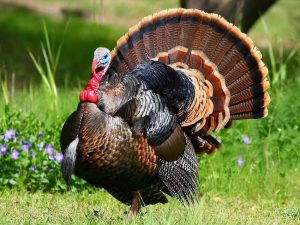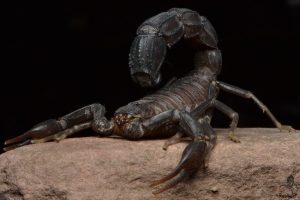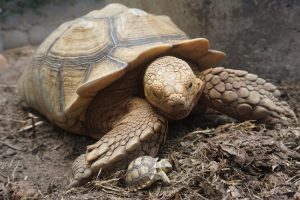Today, keeping reptiles as pets is quite popular, especially among young people. One standout pet is the Red-Eyed Crocodile Skink. To get detailed and accurate information about this reptile—like how much it costs, where to buy one, and how to care for it—we invite you to read the following article from KnowAllAnimals!
Scientific classification
- Kingdom: Animalia
- Phylum: Chordata
- Class: Reptilia
- Order: Squamata
- Suborder: Scinciformata
- Infraorder: Scincomorpha
- Family: Egerniidae
- Genus: Tribolonotus
- Species: T. gracilis
1. Introduction to the Red-Eyed Crocodile Skink
We invite you to learn about the origin, characteristics, personality, and breeding habits of this reptile.
1.1. What Is a Red-Eyed Crocodile Skink?
The Red-Eyed Crocodile Skink, also known by its scientific name Tribolonotus gracilis, is a reptile belonging to the rock skink genus. This lizard prefers to live in damp, mountainous areas near rivers and streams where there is a diverse food supply. This animal is found in large numbers on the islands of Indonesia and the Solomon Islands.
Due to their quick and effective adaptability to new environments, these reptiles have become a special type of pet that is very popular with young people in Vietnam. They also have a striking appearance that is rugged, powerful, and has a hint of a wild, ancient look. Furthermore, this species has a long lifespan; with proper care and nourishment, they can live for up to 10 years.
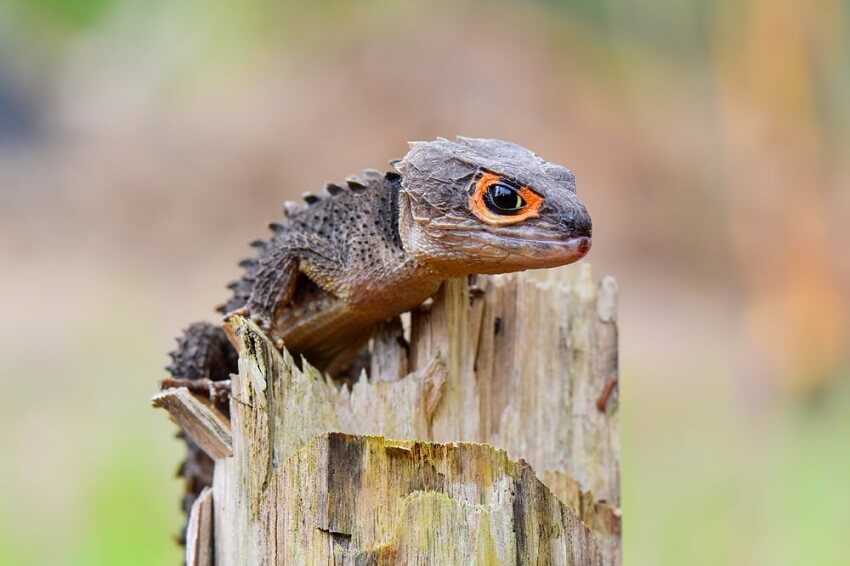
1.2. Appearance of the Red-Eyed Crocodile Skink
They are quite small, perhaps larger than the geckos that live in our homes but smaller than wild salamanders or lizards. An adult can reach a length of 15–25 cm (6–10 inches) with a long, slender body.
The most prominent feature of this species is its red eyes, which look very cool and fierce. They also have sharp spikes growing on their backs, legs, and heads, which makes them look even more rugged and powerful. Like many other reptiles, they have rather coarse, spiky skin that is mainly a grayish-brown color, with a bit of white on their belly to make them stand out. Another thing is that the skin around their eyes is a very distinctive orange-red.
They have a fairly large head compared to their body, a big, slightly blunt snout, and two round nostrils on the top. They also have four long, strong legs with sharp claws that help them run faster.
1.3. Personality of the Red-Eyed Crocodile Skink
In contrast to its tough appearance, this reptile is known for its gentle and shy nature. They have an instinct to hide from predators and humans and often take cover under leaves or in tree or rock crevices.
In addition, this lizard species likes to burrow into soft, moist soil to warm its body. They are also non-venomous and do not bite, so you can rest assured.
1.4. Reproduction of the Red-Eyed Crocodile Skink
The breeding season for this species usually starts from December to March, a time when the weather is warm and there is more food. Females will begin to enter their breeding season when they are 2 years old. A special thing about this reptile is that they have two ovaries but only one oviduct. Therefore, when they reproduce, the eggs from the left ovary will move across the abdominal cavity to the right ovary to be laid.
When they enter the breeding season, a female will lay 6–8 eggs over 6 weeks. In captivity, the number of breeding cycles can be higher depending on how the owner encourages them to breed. If you want them to breed in captivity, you just need to increase the humidity to about 80–95% to effectively stimulate them. The temperature needs to be maintained steadily at 28–30°C (82–86°F) for 2–3 months. When the young hatch, you need to feed them daily and supplement their diet with calcium D3 to help them grow faster.
1.5. Distinguishing Male and Female Red-Eyed Crocodile Skinks
To distinguish between males and females, you should look at their body shape. Adult males are often thinner and smaller than females. Another important distinguishing feature is that males have a membrane that connects their toes on all four feet, similar to webbing, while females do not. This is probably the most basic feature used to distinguish between males and females.
In addition, the male’s call is usually higher-pitched and louder than the female’s. Another thing to note is that if you keep two males together in one tank, they will often fight, but this does not happen if you keep one male and one female.
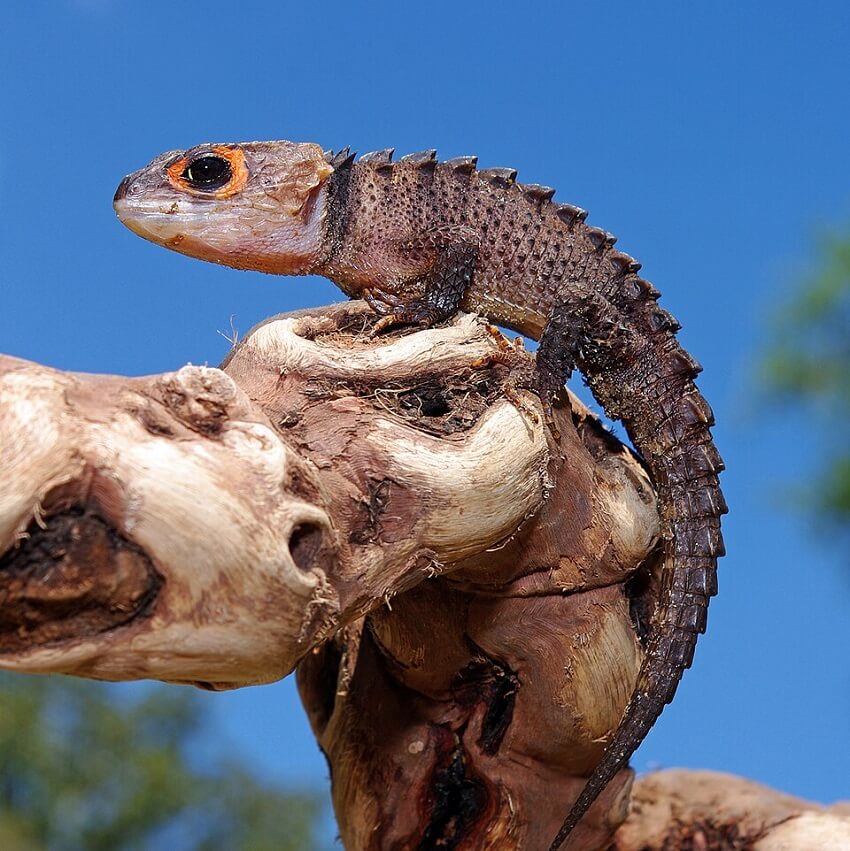
2. Tips for Effectively Raising a Red-Eyed Crocodile Skink
If you want to own a skink, you need to ensure proper care, feeding, and nutrition. Here are some tips for raising one in the best and most effective way.
2.1. Choosing Your Skink
Choosing a skink in Vietnam can be difficult because there aren’t many of them. Therefore, in addition to ordering them on forums, you should go directly to a breeding facility to choose the most suitable skink for you. You should pick skinks that are healthy, lively, and active for a more stable pet.
2.2. The Enclosure
The enclosure is a very important part of raising this species, as a suitable environment will help them develop steadily. The temperature and humidity in the enclosure need to be maintained at 18–30°C (64–86°F) during the day and 12–20°C (54–68°F) at night, with a humidity of 70–95%.
You can use a glass terrarium that is about 60 cm (24 inches) long to easily observe your skink. You should also equip the enclosure with rocks, plants, logs, and a water dish for the skink to rest or hide in. Additionally, you should line the enclosure with dried grass, sand, or a specialized substrate for reptiles. You also need to equip the enclosure with temperature and humidity control devices to ensure the best environment for your Red-Eyed Crocodile Skink.
You should place the enclosure in an area with a lot of light, especially UVB light. If you don’t have a space with a lot of light to place the enclosure, you can use a UVB lamp to provide light for the skink, as this light is very good and important for their development. A UVB light level of around 5.0 is suitable.
2.3. What Do Red-Eyed Crocodile Skinks Eat?
As a carnivorous reptile, the skink’s natural diet consists of worms, crickets, grasshoppers, spiders, flies, beetles, butterflies, dragonflies, etc. In captivity, you should feed them a variety of foods or buy food from pet stores. You should feed them at the same time, three meals a day, with a consistent amount each time. You should also feed them fresh, sanitary food and avoid spoiled or contaminated food.
In addition to a proper diet and the right temperature and humidity, you should also regularly clean the enclosure. Removing waste and changing the water often will ensure a safe environment and help them develop steadily.
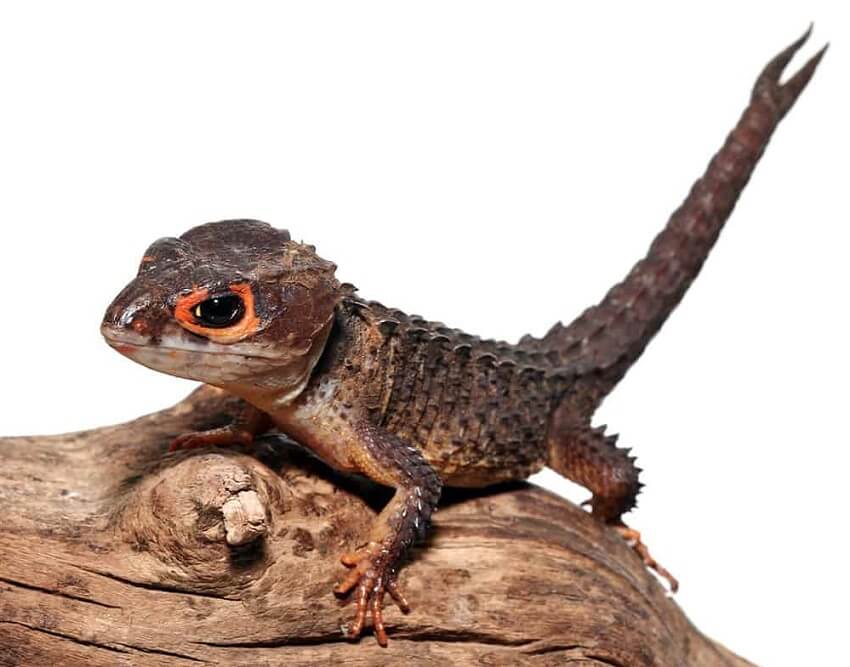
3. How Much Does a Red-Eyed Crocodile Skink Cost? Where Can I Buy One?
Based on our research, the market price for this species currently ranges from $100–$140 per skink. This is considered a rather high price for a small reptile of this size.
However, if you’re looking to buy a smaller skink, with a size of around 10–12 cm (4–5 inches), the price is lower, ranging from $60–$80 per skink.
Currently, it can take a lot of time to find one. Your best bet is to order in advance from a seller, breeding facility, or pet store. That way, they can call you as soon as they have one available. If you want them to breed, you should keep one male and one female.
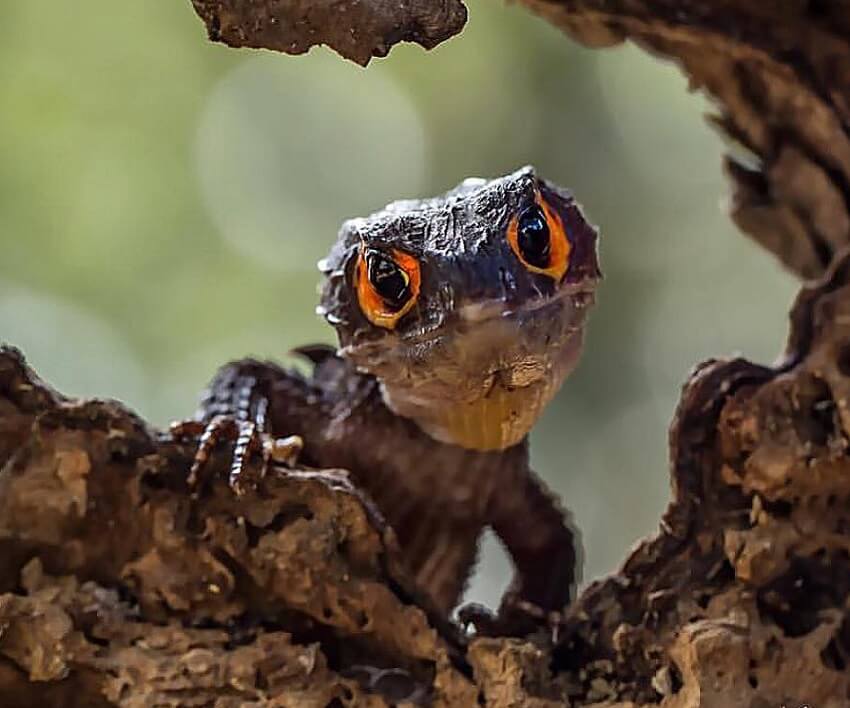
4. FAQs
1. Are red-eyed crocodile skinks good pets?
Yes, they are great for reptile enthusiasts looking for a unique and shy pet. However, they require a specific environment and are best suited for observation rather than handling.
2. What do red-eyed crocodile skinks eat?
They are insectivores and primarily eat small insects such as crickets, dubia roaches, and mealworms.
3. What type of habitat do they need?
They need a humid, tropical terrarium with plenty of hiding spots, a moist substrate, and temperatures between 72–82°F (22–28°C).
With the information Know All Animals has shared, we hope we’ve helped you answer your questions about how much a Red-Eyed Crocodile Skink costs, where to buy one, and how to care for it in the most detailed and accurate way. Remember that there are currently very few of these reptiles in our country, so you should place an order in advance to get one. Thank you for reading our article.
References: https://en.wikipedia.org/wiki/Red-Eyed_Crocodile_Skink

